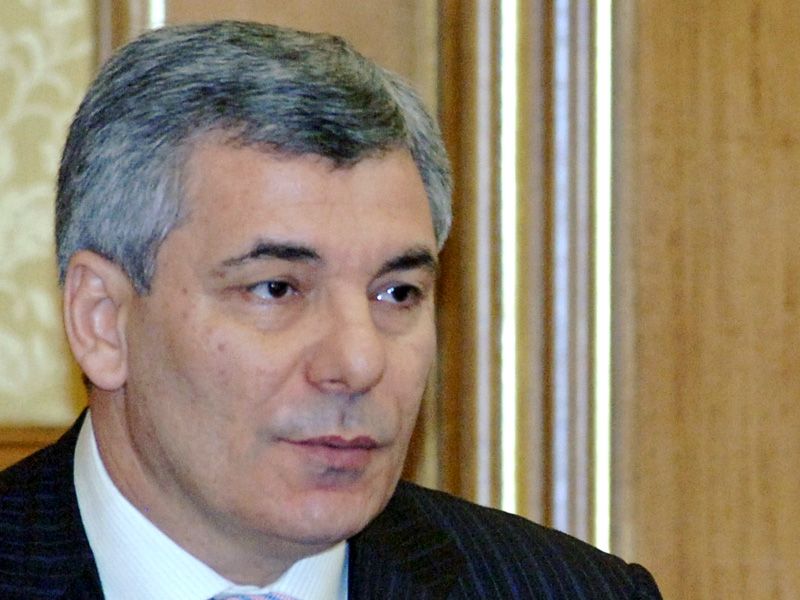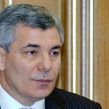
Circassian Opposition to the Kremlin Mounts in the Northwest Caucasus
Publication: Eurasia Daily Monitor Volume: 6 Issue: 232
By:

The authorities and opposition movements in the Circassian republics of the northwestern Caucasus have returned to negotiations after a series of protest demonstrations and violent attacks targeting the leaders of Circassian non-governmental organizations (EDM, November 18 and 25, December 3).
On October 30, the parliament of Kabardino-Balkaria (KBR) issued a new law taking around 30,000 hectares of pastures from Circassian villages and giving them to their Balkar neighbors. On November 12, three articles were removed from the KBR as “separatist” laws. On November 17 two non-profit movements, the Circassian Congress (CC) and Khasa, organized a mass demonstration in Nalchik against the new land law, with CC leader Ruslan Keshev declaring: “We are ready for radical actions” (EDM, November 18, 25).
On November 26, approximately 3,000 young Circassians and Abazas gathered in Karachaevo-Cherkessia (KChR) to protest against violations of their ethno-political rights. A group of 300 Circassians who were driving from KBR to join the protest walked for miles after being stopped at a military checkpoint, where their vehicles were blocked from entering the KChR (EDM, December 3). On December 1, Keshev was hospitalized with multiple injuries after being attacked by a group of well-built men. That same day, the KChR parliament lodged a complaint with the Russian prosecutor-general against the Circassian movement in the KChR, accusing its leaders of crimes under articles 280 and 282 of the Russian criminal code (EDM, December 3).
The demonstration scheduled for December 5 in Nalchik was cancelled after organizers were alerted to the possibility of a provocation being planned to discredit the group. An hour before the demonstration, the leader of the Circassian NGO Khasa, Ibragim Yaganov, was hospitalized after being attacked by a group of young sportsmen who, according to Yaganov, started beating him and used the following words: “We are Muslims, but you nationalists separate our people” (Gazeta Yuga, December 10).
On December 6, another leader of the Circassian Congress was attacked in Maikop, Adygeya, 200 miles west of Nalchik. A grenade exploded in the backyard of Murat Berzegov’s home, burning his car and the front door of his house. On December 9, an office of the Council of Elders of Balkaria in Nalchik was burned down by unknown perpetrators. On December 12, the KBR parliament suspended the law on land, which had been opposed by both Circassians and Balkars. Zalim Kashirokov, a representative of the KBR president, announced that the law on land had been abolished in order to solve inter-ethnic problems. Now, any decision on the ownership of a tract of land must be negotiated between villages and only after the decision is reached can the parliament approve the status of that territory (www.kavkaz-uzel.ru, December 12)
Two questions have been the source of extensive controversy in Circassian blogs and forums (such as www.heku.ru): who was behind the attacks on Circassian leaders? And what was the role of the Islamic insurgency? There is a whole chain of events that goes beyond any of the theories that have been put forward.
For instance, according to one theory, KBR President Arsen Kanokov was involved in the attacks, using his bodyguard unit to break up the opposition. That theory seemed logical considering the impending end of Kanokov’s presidency and the strong opposition to his rule within the local business elite affiliated with the Kremlin. However, the fact that Circassian Congress leader Ruslan Keshev, who has been in Kanokov’s circle of advisors, was the first to be attacked ruins the “Kanokov’s guard” theory.
The motive for the attack on Murat Berzegov in Maikop obviously cannot be explained in any way other than in connection with his political activities, which are fully and only concentrated on general Circassian issues such as the recognition of the Circassian genocide, opposition to the Sochi Olympic Games, and so on. Finally, there is no way to connect with the Wahhabi or Kanokov theory to the complaint that the KChR parliament issued against the Circassian NGO’s in the republic. The most logical explanation demands something more general than local political or ethnic frictions.
The way the situation has been solved in KBR (without an appeal to the Kremlin to resolve it) raises suspicions that the triangular scheme –with the Circassians and their neighboring Turkic speaking Karachai-Balkars playing the opposite roles against each other and both appealing to the Kremlin for a justice, and with Moscow escalating tensions in order to support its rule over the Caucasus– does not work properly anymore. Notes of tolerance have been appearing in the public exchanges between the leaders of the national movements, although they still indicate a strong determination to continue standing for their rights (www.kavkaz-uzel.ru, December 12).
Until very recently, the anti-colonial resistance in the Circassian republics could best be described as consisting of two non-crossing parallels, one represented and being carried out by groups of Islamic rebels and the other being non-violent resistance represented by the NGO sector. The NGO resistance has often obeyed the Kremlin more than the local governments and it has been easy to fit the NGO’s into different types of agendas – from declaring national independence goals to simply opposing the local governments or confronting them with different ethnic groups.
There are obvious examples, such as the most influential political organization, the Worldwide Circassian Association changing its agenda from national independence to cultural preservation only (Harvard University, Conference on the Circassians, April 2008) or the Adyge Khasa of Cherkessk suddenly entering into an ethnic conflict with the Karachais soon after appealing to Boris Yeltsin’s administration with a declaration of independence of Circassia (1996-1999 KChR media archives).
On December 12, the leader of the Islamic resistance in Kabarda, Karachai and Balkaria, Anzor Astemirov aka Seifullah, released a statement explaining the position of the Islamic resistance regarding the situation in the Circassian republics. He made it clear that the local confrontations that occurred are outside the Islamic resistance’s agenda. The first and only priority, he said, is to overthrow the “illegal Russian regime and as long as any ethnic movement is sharing the same goal, the jamaat will not interfere with them” (www.islamdin.com, December 12).
It is quite possible that the parallel structure in Circassia described above converged into a mixture of ethno-political and militant religious resistance similar to that which exists in Dagestan, Chechnya and Ingushetia. Moreover, the growing influence among the Circassians moves an Islamic insurgency from the position of an insignificant segment of society to the place of a powerful player in the political arena, with the ability to undermine the Kremlin’s influence in the Northwest Caucasus.




